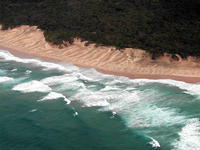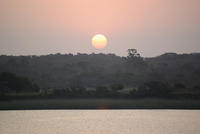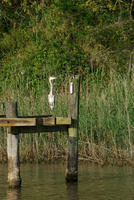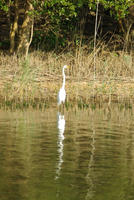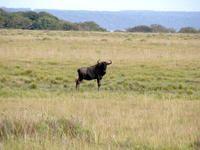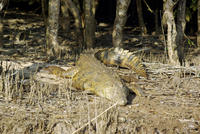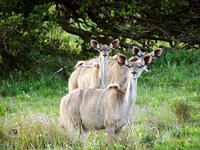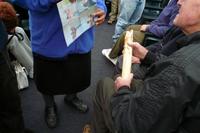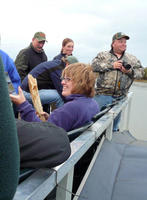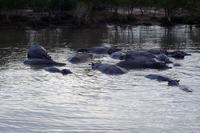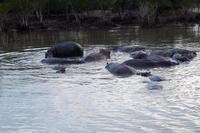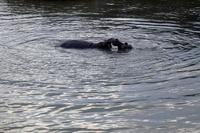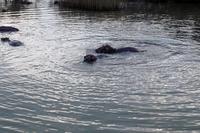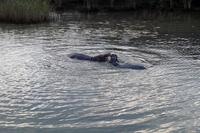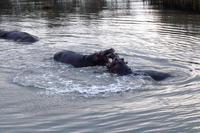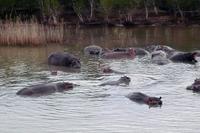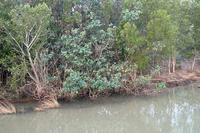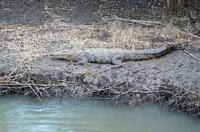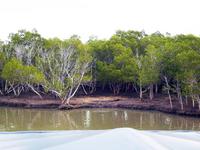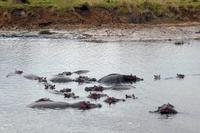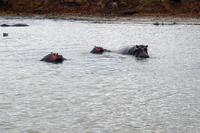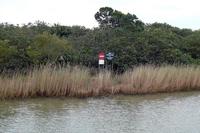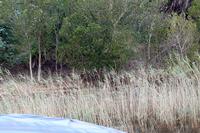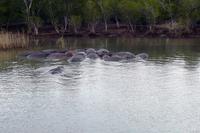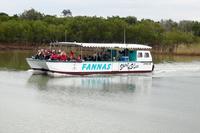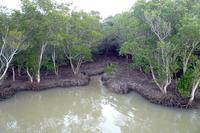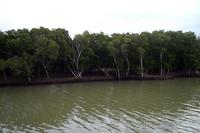You are in: Africa -> South Africa -> Greater St Lucia Wet... , and traditional search or Image Gallery will yield results of this site only
Greater St Lucia Wetland Park
| Site number: | 914 |
|
| Type of site: | Natural | |
| Date: | - | |
| Date of Inscription: | 1999 | |
| Location: | Africa, South Africa, KwaZulu-Natal | |
Up to 75 images are shown here. Click on each for more details or on Image Gallery for more images.
| Description: | The site’s continuing fluvial, marine and aeolian processes have shaped a mixture of landforms, from coral reefs, long sandy beaches, coastal dunes, and lake systems to swamps, and extensive reed and papyrus wetlands. The interaction of the park's environmental heterogeneity with huge floods and coastal storms and geographically being stuck between subtropical and tropical Africa has produced an outstanding species diversity and ongoing speciation. Awe-inspiring scenic views are created through the medley of landforms and habitat types. The site encloses critical habitats for Africa's marine, wetland as well as savannah species. --WHMNet paraphrase from the description at WHC Site, where additional information is available. | |
| iSimangaliso Wetland Park is situated on the east coast of KwaZulu-Natal, South Africa about 275 kilometres north of Durban. It is South Africa's third-largest protected area, spanning 280 km of coastline, from the Mozambican border in the north to Mapelane south of the St Lucia estuary, and made up of around 3,280 km² of pristine natural ecosystems, managed by Ezemvelo KZN Wildlife. The park includes the St Lucia Game Reserve, False Bay Park, St Lucia Marine Reserve, Sodwana Bay National Park, Maputaland Marine Reserve, Cape Vidal, Ozabeni, Mfabeni, Tewate Wilderness Area and Mkuze Game Reserve. The park was previously known as the Greater St. Lucia Wetland Park, but was renamed effective from 1 November 2007. The word 'isimangaliso' is Zulu for 'a marvel'. Though less well known than larger southern African parks like Kruger National Park and the Okavango Delta, St. Lucia supports more species, and for some, St. Lucia is critical habitat. These include the White-backed and Pink-backed Pelican, Greater and Lesser Flamingos, Madagascar Fish Eagles, and some 530 other bird species. It is also home to the largest population of hippopotami in South African parks. Elephants were reintroduced in 2001. Two sea turtle species use the beaches for laying eggs. The coastal reserve includes not only beaches but offshore coral reefs, and Humpback Whales migrate along this section of the coast. It is the one park in Africa where hippopotami, crocodiles, and sharks can be found all in the same area. The park is also famous as a home to coelacanth, a fish species from millions of years ago that was known to scientists from fossil records and presumed to have been extinct until a live specimen was found in a trawler net in 1938 just off the African coast. Scientists have since found a number of these four-legged fish in very deep, rocky, marine environments, but it is still a very rare fish and protected under international law. On November 27, 2000, three living specimens of coelacanth were found and photographed in a submarine canyon off the coast near Sodwana Bay inside the St. Lucia Reserve. The park is home to 1,200 Nile Crocodiles and 800 Hippopotami. In December 1999, the park was declared a UNESCO World Heritage Site. --Wikipedia. Text is available under the Creative Commons Attribution-ShareAlike License. | ||
| Source: | http://whc.unesco.org/en/list/914 | |
| Reference: | 1. UNESCO World Heritage Center, Site Page. | |


